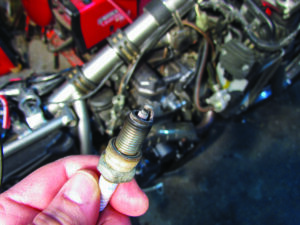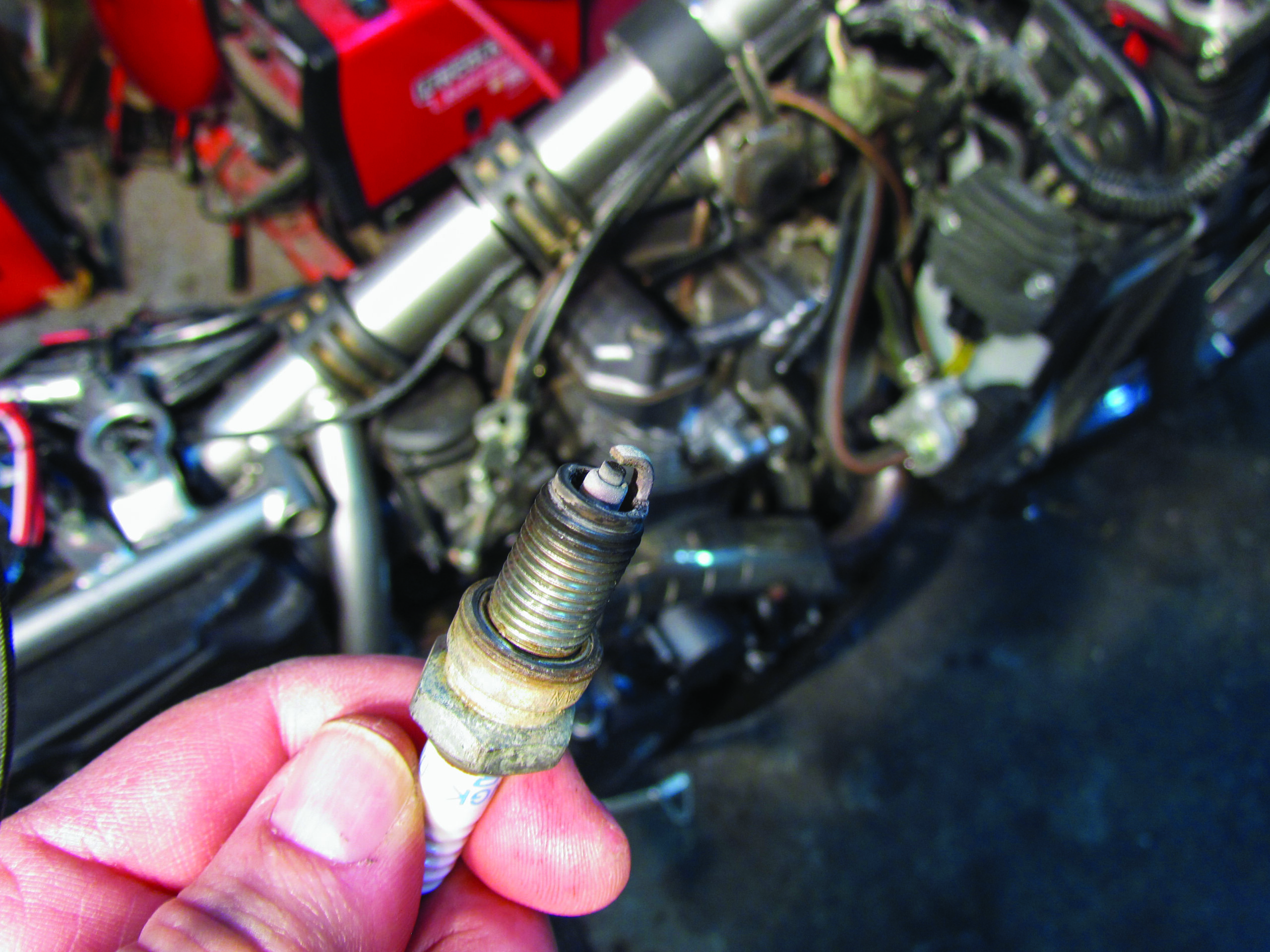Tune-Up 101
There are many maintenance items you can easily do at home.
Assuming your bike is running well and you want to keep it running that way, you’ll have to perform some regular maintenance. Your bike’s maintenance schedule and specs are found in the owner’s manual. The first thing on the list is the engine oil and filter change. Oil-change intervals vary between manufacturers, and note that the mileage given is under ideal conditions; frequent short rides, or wet or dusty conditions require more frequent oil changes. Changing the oil on most bikes is easy enough to be performed at home. If you do it on your own, use the recommended oil; you must use JASO-MA rated oil in wet-clutch bikes, unless the clutch rides in dedicated oil. Don’t use automotive motor oil in your wet-clutch bike, as it will eventually damage the clutch. And whatever your mileage, change the oil at least once a year.
Checking the air filter can be as simple as lifting the seat and removing a couple of screws, or you might have to remove things like the fuel tank, fairing panels, or more. There are two types of air filter used on production bikes: paper element or oiled foam. If it’s paper and it’s only slightly dirty (you can see light through it), it can be blown clean with compressed air (wear safety glasses). If it’s oily (normal since crankcase vapours vent into the airbox to reduce emissions), change it. An oiled-foam filter can be washed with dishwashing detergent and warm water, then dried and re-oiled with gear oil or foam filter oil. If your bike has an aftermarket oiled gauze filter, it can be washed with a special cleaner (like K&N Power Kleen), and re-oiled using gauze filter oil.
Sometimes spark plugs are easily accessible; sometimes body parts and fuel tanks must be removed to get at them (like on my KLR650). If a visual inspection reveals rounded electrodes, it’s time to change the plugs. Most spark plugs are pre-gapped, but check them anyway. You might want to upgrade to platinum- or iridium-tipped plugs; they’re more expensive but last much longer than regular plugs — definitely an advantage if you have to tear your bike apart to get to them.
 Check the coolant level on liquid-cooled bikes. This is usually very easy to do, as most bikes have a viewing window on the overflow reservoir bottle. Add coolant (not water) to the reservoir bottle, not the radiator. If the bottle is completely empty, check the level in the radiator, through the filler cap; if it seems unusually low it may be an indication of a cooling system problem — have it checked out.
Check the coolant level on liquid-cooled bikes. This is usually very easy to do, as most bikes have a viewing window on the overflow reservoir bottle. Add coolant (not water) to the reservoir bottle, not the radiator. If the bottle is completely empty, check the level in the radiator, through the filler cap; if it seems unusually low it may be an indication of a cooling system problem — have it checked out.
If your bike has a conventional battery (identifiable by the screw-in filler caps), check the electrolyte level and top it up with distilled water if needed; this isn’t necessary on low- or no-maintenance batteries. Your bike may have a lithium-ion battery, which needs no maintenance. However, you will need a specialized battery charger to charge it up if needed. Finally, make sure the battery terminals are secure.
Check drive chain condition and tension, and lube it if needed. No lube is needed for a belt-driven bike, but check the tension, which is usually much tighter than a chain (owner’s manual, folks!). A shaft drive needs no maintenance other than an occasional oil level check, usually done through the filler cap or an oil-level screw.
Have a general look around the bike: Check brake pads for wear, look for leaks, check for loose fasteners, check clutch fluid level or cable free play, and check brake fluid level and condition — if it’s dark it needs replacing, and should be replaced every two years (this also applies to hydraulic clutch fluid). Lubricate the cables (something that very few shops will include in a tune-up).
The basic tune-up can be done at home, or you can pay to have your local shop do it. The tune-up you’ll receive in a professional shop will differ from the kind you’ll probably perform on your own; you can take more time to check things not on the maintenance schedule. Dealers usually charge a flat rate for a tune-up, and this price will usually have exclusions (it’s in the fine print), so always ask what is included in a tune-up — does a valve adjustment cost more?
Even though you may perform your own maintenance, you might still have to visit the dealer; if you ride a current fuel-injected motorcycle, it may need a software update. And to avoid voiding the warranty, read the fine print in the warranty booklet to see what can and cannot be done at home — it varies by manufacturer. By performing your basic tune-up at home and leaving the complicated things for the dealer, you’ll have more money for important things, like riding.

Thanks for Reading
If you don’t already subscribe to Motorcycle Mojo we ask that you seriously think about it. We are Canada’s last mainstream motorcycle magazine that continuously provides a print and digital issue on a regular basis.
We offer exclusive content created by riders, for riders.
Our editorial staff consists of experienced industry veterans that produce trusted and respected coverage for readers from every walk of life.
Motorcycle Mojo Magazine is an award winning publication that provides premium content guaranteed to be of interest to every motorcycle enthusiast. Whether you prefer cruisers or adventure-touring, vintage or the latest models; riding round the world or just to work, Motorcycle Mojo covers every aspect of the motorcycle experience. Each issue of Motorcycle Mojo contains tests of new models, feature travel stories, compelling human interest articles, technical exposés, product reviews, as well as unique perspectives by regular columnists on safety or just everyday situations that may be stressful at the time but turn into fabulous campfire stories.
Thanks for considering a subscription. The Mojo team truly appreciates it.












